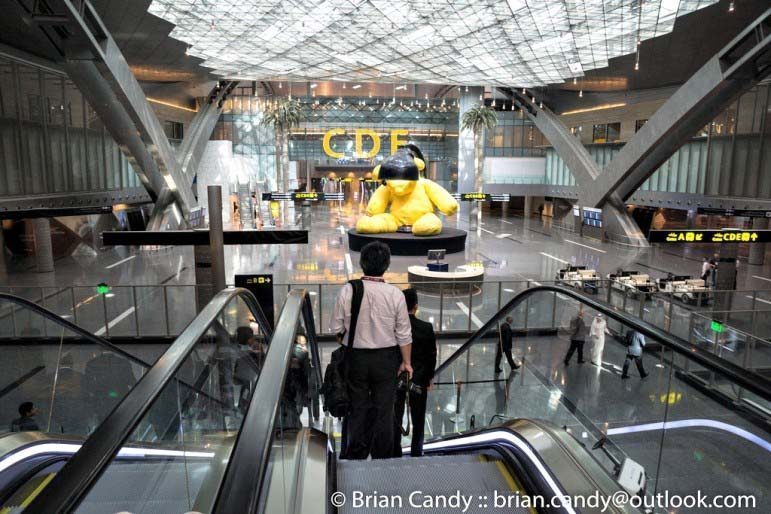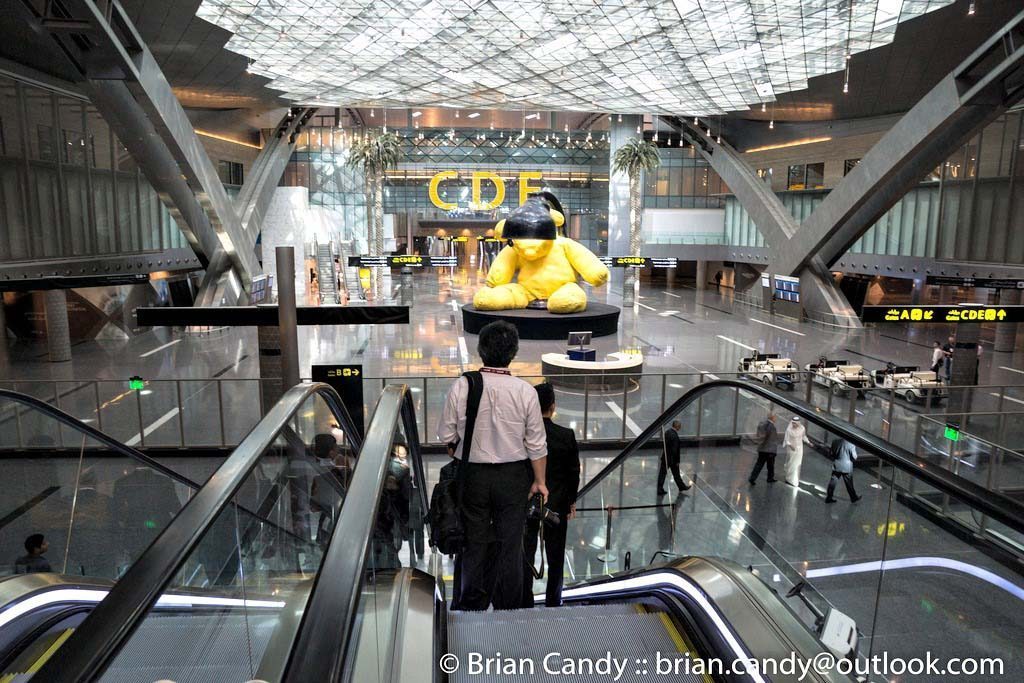
A new drop-off area for premium passengers, wide concourses with more natural light and a connection to the Doha Metro are being considered as part of plans to double the size of Hamad International Airport’s (HIA) main terminal by 2020, a senior aviation official has said.

Additionally, a new 45,000sqm passenger amenity area – with features such as a museum, spa, children’s play area, garden, library, gym, outdoor dining and lounges – is being planned for the northern part of the terminal.
“It will provide a ‘wow’ factor … (and) a unique and enhanced passenger experience,” Peter Daley, the project director for the New Doha International Airport Steering Committee, said yesterday during the final day of the Qatar Transport Forum.
While Daley declined to say what the expansion would cost, regional business intelligence firm MEED pegged it at US$8 billion.
After roughly a decade of planning, construction and delays, HIA opened last year to international accolades.
The facility currently has a capacity of 30 million passengers annually, but Daley said it needs to be expanded to accommodate the expected increase in both the country’s population and number of visitors – especially in advance of the 2022 World Cup, when tournament organizers expect some 86,000 passengers to be traveling on peak days.
New concourses
The planned expansion – which Daley cautioned is subject to the approval of “higher authorities” – will be focused on concourses D and E, which extend out as wings from the existing concourse C that passengers see directly ahead of them after clearing security.

This area will form “the new heart of the airport” and is expected to handle 60 percent of passenger traffic, Daley said. While there will be “continuity of the high-class finishes,” some design elements are being reconfigured, he said.
“(Along) the perimeter of the building, the steelwork is being reduced to allow greater light to enter into the building.”
HIA opened last year with a 471,000sqm terminal and 33 contact gates directly attached to the terminal building as well as several “remote” gates on the tarmac that require buses to bring passengers to the terminal.
Daley said yesterday that the planned expansion will increase the size of the passenger terminal to more than 1 million square meters, nearly double the number of contact gates to 61 and bring the number of remote gates to 14.

To handle the additional travelers, the main building where visitors enter and exit the airport will also be enlarged. Daley said the current preferred option is to replicate and extend the existing design in either direction.
In addition to adding dozens of check-in counters and more baggage carousels, curbside drop-off areas would also be extended.
With the extra space, planners are envisioning a dedicated area for private vehicles carrying premium-class passengers on the east side of the building, where the first and business-class check-in desks are currently located.
The preliminary design work is currently being undertaken by architectural firm Foster + Partners (which is also designing the Lusail World Cup Stadium) and tenders are expected to be released early next year.
Ahead of the expansion of concourses D and E, aviation authorities are preparing to award contracts “shortly” to continue extending the terminal north.
This project includes adding:
- 130,000sqm to the terminal building;
- Eight additional contact gates;
- 3,700sqm of retail, food and beverage areas;
- 5,400sqm of lounge space; and
- A 100-room hotel.
Doha Metro
Officials are also working on several other construction projects at HIA, including integrating the Doha Metro to the airport.

Current plans envision a station located between the existing public mosque and lagoon, connected to the terminal with a pedestrian tunnel, Daley said.
Additionally, plans are being prepared to expand the Emiri hangar, fill in areas of the sea around the northern part of the west runway and build out the western airfield to provide more space for planes to taxi as well as add more firefighting training areas and fuel facilities.
There was no mention of the passenger shuttle train inside the terminal, which has been undergoing testing for several months.
Thoughts?







